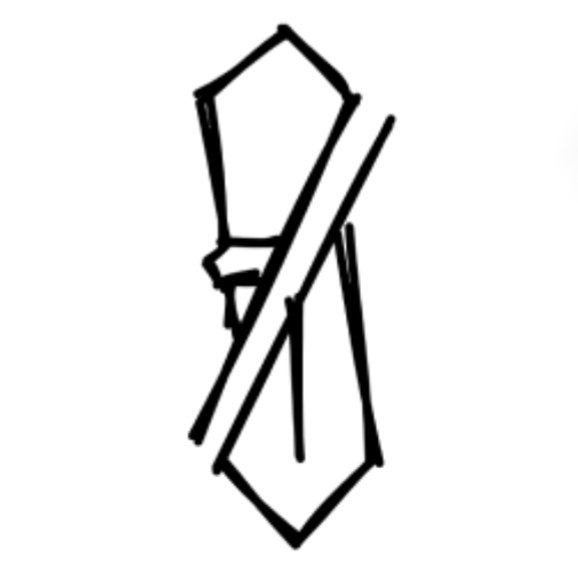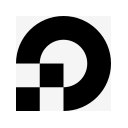IFBB 精英联盟规则:男子健体

IFBB 精英联盟规则:男子健体
李瑶瑶IFBB 精英联盟规则:男子健体

内容声明
本文内容来源于:IFBB FEDERATION RULES
仅供个人学习使用
中文部分为我个人翻译校对,转载请注明来源 理・型・健 —(必应 Bing 可以搜索到)
同系列其它文章:
IFBB 精英联盟规则:通用规则 | 理・型・健
IFBB 精英联盟规则:男子健身模特 | 理・型・健
IFBB 精英联盟规则:男子古典健体 | 理・型・健
IFBB 精英联盟规则:男子传统健美 | 理・型・健
IFBB 精英联盟规则:女子比基尼 | 理・型・健
IFBB 精英联盟规则:女子健康小姐 | 理・型・健
除此之外,如果有转译不清楚甚至有误的部分,建议去原文件自行考证,每个部分我都会附上原文件链接。
健体 Men’s Physique
官方文件:Men’s Physique Rules (2024)
摘要
这份文档是国际健身健美联合会(IFBB) 2024年版男子健体和肌肉型男子健体项目的规则。它详细规定了比赛的各个方面,包括参赛资格、不同级别的划分(身高和年龄)、比赛流程(预赛和决赛,包含多个回合和姿势要求)、评分标准(强调比例、对称性、肌肉轮廓和质量,而非极度肌肉发达),以及违规行为和处罚。 重点在于区分男子健体与健美,前者更注重运动员的整体美感和健康体魄,而非极度肌肉发达。 文档还包含了对标准姿势的详细描述和图片,旨在确保比赛的公平公正和统一标准。
文件目录与简介
目录索引(点击展开)
第1条:引言
- 介绍了男子健体运动的起源和发展,以及肌肉男子健体类别的引入。
第2条:组织者对运动员和代表的责任
- 概述了赛事组织者在住宿和膳食方面对运动员和代表的责任。
第3条:分组
- 详细列出了成年男子健体、肌肉男子健体、青少年男子健体和大师男子健体的各个组别,包括身高和年龄限制。
第4条:轮次
- 介绍了男子健体比赛的三个轮次:预赛的淘汰轮,预赛的第一轮,和决赛的第二轮。
第5条:预赛:淘汰轮
- 详细描述了当一个类别中有超过15名选手时如何进行淘汰赛,以及如何选择前15名进入下一轮。
第6条:所有轮次的着装
- 详细规定了所有轮次的着装要求,包括宽松的及膝短裤、禁止使用的材料和装饰,以及允许使用的助晒产品和身体油等。
第7条:预赛:淘汰轮的评估和评分
- 说明了淘汰轮的评估标准和评分流程,包括如何选出进入下一轮的选手。
第8条:预赛:第一轮的展示(四个转向)
- 描述了第一轮的流程,包括选手入场,分组以及四个转向展示。
第9条:预赛:第一轮的评分
- 详细说明了第一轮的评分标准和流程,包括裁判的个人评分、统计员的计分以及如何处理平局。
第10条:淘汰轮,第一轮和第二轮的评估 (四个转向对比)
- 介绍了如何评估淘汰轮,第一轮和第二轮(四个转向体对比)。
第11条:决赛
- 说明了进入决赛的选手数量以及决赛的轮次安排。
第12条:决赛:第二轮的展示
- 描述了决赛第二轮的流程,包括选手入场和四个转向展示。
第13条:决赛:第二轮的评分
- 详细说明了决赛第二轮的评分标准和流程,包括裁判的个人评分、统计员的计分以及如何处理平局。
第14条:决赛:第二轮的评估
- 介绍了如何评估决赛的第二轮,与第一轮的评估标准相同。
第15条:决赛:颁奖典礼
- 详细说明了颁奖典礼的流程,包括奖项颁发、国歌播放和选手拍照环节。
第16条:决赛:总冠军和奖项
- 概述了如何选出高级男子健体、青少年男子健体和大师男子健体的总冠军,以及总冠军的奖励。
第17条:决赛:队伍分类结果和奖励
- 介绍了如何对国家队进行排名,以及如何颁发团队奖项。
附录1:男子健体四个转向的详细描述
- 详细描述了男子健体四个转向的姿势,包括站姿和手部、腿部的位置。
附录2:如何评估男子健体的四个转向
- 说明了如何评估男子健体的四个转向,强调了整体的体型、比例、皮肤状况和姿势。
附录3:男子健体四个转向的照片
- 提供了男子健体四个转向的照片示例。
英文目录索引(点击展开)
Article 1: Introduction
Article 2: Responsibilities of Organizers to Athletes and Delegates
Article 3: Categories
Article 4: Rounds
Article 5: Prejudging: Elimination Round
Article 6: Posing Attire for All Rounds
Article 7: Prejudging: Assessing and Scoring of the Elimination Round
Article 8: Prejudging: Presentation of Round 1 (Quarter Turns)
Article 9: Prejudging: Scoring of Round 1
Article 10: Assessing of the Elimination Round, Round 1 and Round 2 (Comparisons in Quarter Turns)
Article 11: Finals
Article 12: Finals: Presentation of Round 2
Article 13: Finals: Scoring of Round 2
Article 14: Finals: Assessing of Round 2
Article 15: Finals: The Awarding Ceremony
Article 16: Finals: Overall Category and Award
Article 17: Finals: Teams Classification Results and Awards
Appendix 1: Detailed Description of the Men’s Physique Quarter Turns
Appendix 2: How to Assess Men’s Physique Quarter Turns
Appendix 3: Photos of Men’s Physique Quarter Turns
分组规则
3.1 成年男子健体 (Senior Men’s Physique)
- A 组: 身高不超过(包括)170厘米。
- B 组: 身高不超过(包括)173厘米。
- C 组: 身高不超过(包括)176厘米。
- D 组: 身高不超过(包括)179厘米。
- E 组: 身高不超过(包括)182厘米。
- F 组: 身高超过182厘米。
3.2 成年肌肉男子健体 (Senior Muscular Men’s Physique)
- A 组: 身高不超过(包括)179厘米。
- B 组: 身高超过179厘米。
- 注意: 肌肉男子健体类别是为那些肌肉发达程度略高于普通男子健体的选手设立的。
3.3 青少年男子健体 (Junior Men’s Physique)
- 16至17岁(包括16和17岁): 一个公开组别。
- 18至20岁(包括18和20岁): 一个公开组别。
- 21至23岁(包括21和23岁)
- A 组: 身高不超过(包括)174厘米。
- B 组: 身高不超过(包括)178厘米。
- C 组: 身高超过178厘米。
3.4 大师男子健体 (Masters Men’s Physique)
- A 组: 40-44岁:一个公开组别。
- B 组: 45-49岁:一个公开组别。
- C 组: 50岁及以上:一个公开组别。
3.5 关于比赛类别的补充说明
- 除非是世界级和洲际锦标赛,否则每个类别必须至少有3名选手才能进行比赛。如果少于3名,则至少需要5名选手。如果少于5名,则尽可能合并类别。
3.6 兼项参赛
- 男子健体选手如果符合该项目的特定要求,也可以参加同一比赛中的其它男子健身项目。
3.1 There are six categories in Senior Men’s Physique, currently as follows:
- Class A: Up to & including 170 cm
- Class B: Up to & including 173 cm
- Class C: Up to & including 176 cm
- Class D: Up to & including 179 cm
- Class E: Up to & including 182 cm
- Class F: Over 182 cm
3.2 There are two categories in Senior Muscular Men’s Physique competition, currently as follows:
- Class A: Up to & including 179 cm
- Class B: Over 179 cm
Note: Muscular Men’s Physique category is intended for competitors with slightly bigger muscularity than accepted in the regular men’s physique.
3.3 There are the following categories in Junior Men’s Physique, currently as follows:
- 16 to 17 years of age inclusive:
- One open category
- 18 to 20 years of age inclusive:
- One open category
- 21 to 23 years of age inclusive:
- Class A: Up to & including 174 cm
- Class B: Up to & including 178 cm
- Class C: Over 178 cm
3.4 There are three categories in Masters Men’s Physique, currently as follows:
Class A: Age 40-44: one open class
Class B: Age 45-49: one open class
Class C: Age 50 and over: one open class
3.5 Except of the World and Continental Championships, a category can only be run if there are not less than 3 athletes. If less than 3 athletes, categories will be combined wherever possible. Masters categories will not be combined. At the World and Continental Championships a category can only be run if there are not less than 5 athletes. If less than 5 athletes, categories will be combined wherever possible.
3.6 Crossovers:
- Men’s Physique competitors may also participate in the Men’s Fitness division at the same contest, if they meet specific requirements obligatory in that division.
着装要求
第6条 – 预赛和决赛:所有轮次的着装
6.1 淘汰轮和其他轮次(沙滩短裤)的着装将符合以下标准:
- 选手将穿着不透明、宽松的沙滩短裤,保持干净和得体。短裤的颜色和面料由选手自行决定。短裤可以有几何图案和图案,但不能有文字和凸起的装饰。短裤覆盖整个大腿上部,直到膝盖上部(髌骨)。禁止在短裤的任何地方使用填充物。
- 不允许穿紧身的莱卡风格短裤。(个人注解:lycra,莱卡,紧身面料,常用作紧身衣、泳装和健美服)
- 短裤上不允许有个人赞助商的标志;然而,制造商的标志是可以接受的。
- 除了结婚戒指外,选手不得穿戴鞋子、眼镜、手表、耳环、假发、珠宝、分散注意力的装饰品或人工辅助物。禁止使用任何改变身体其他部位或肌肉自然形状的植入物或液体注射,违者可能会被取消资格。
- 一般禁止佩戴头饰,但如果选手所在国家的官方规则或选手遵守的宗教原则要求,可以佩戴无帽檐的小紧帽。此帽子应在官方运动员注册时展示,并由指定的 IFBB 官员批准。
6.2 禁止使用可以擦掉的晒黑剂和古铜色剂。如果晒黑剂可以通过简单擦拭掉落,选手将不被允许上台。可以使用人工身体着色和自我晒黑产品。如果由专业公司和合格人员应用,可以使用专业比赛晒黑方法(喷枪晒黑、喷雾晒黑)。无论是作为晒黑乳液的一部分还是单独涂抹,禁止使用闪光、亮片、金属珍珠或金色着色。
6.3 严禁过度使用身体油;然而,可以适量使用身体油和保湿剂。
6.4 IFBB 主裁判或其指定的官员有权决定选手的着装是否符合规则中规定的标准和美学标准。如果着装不符合标准,选手可能会被取消资格。
Article 6 – Prejudging and Finals: Attire for All Rounds
6.1 The attire for the Elimination Round and other Rounds (board shorts) will conform to the following criteria:
Competitors will wear an opaque, loose-fitting board shorts which are clean and decent. The colour and fabric of the shorts will be left to the competitor’s discretion. Shorts may have geometric patterns and motives, but no inscriptions and cambered ornamentation. The shorts will cover the whole upper leg, down the upper point of the knee (patella). The use of padding anywhere in the trunks is prohibited.
No tight, lycra style shorts are allowed.
Personal sponsors logos are not permitted on the shorts; however a manufacturer’s logo such is accepted.
Except for a wedding ring, competitors will not wear footwear, glasses, watches, earrings, wigs, jewellery, distracting ornamentation or artificial aids to the figure. Implants or fluid injections causing the change of the natural shape of any other parts or muscles of the body are strictly prohibited and may result in disqualification of the competitor.
Headgears are generally prohibited but if it is required by the official rules of the country represented by a competitor or due to the religious principles observed by a competitor, a small, tight cap with no vizor, may be used. This cup should be shown at the Official Athlete Registration and approved by the designated IFBB official
6.2 The use of tans and bronzers that can be wiped off is not allowed. If the tan comes off by simply wiping, the athlete will not be allowed to enter the stage. Artificial body colouring and self-tanning products may be used. Professional competition tanning methods (airbrush tanning, cabin spray tanning) may be used if applied by the professional companies and qualified personnel. Sparkles, glitter, shiny metallic pearls or gold coloring are prohibited whether applied as part of a tanning lotion or applied separately, regardless of who applied them on the competitor’s body.
6.3 The excessive application of oil on the body is strictly prohibited; however, body oils and moisturizers may be used in moderation.
6.4 The IFBB Chief Judge, or a delegated by him official, will have the right to make decision if a competitor’s attire meets the criteria established in the Rules and an acceptable standards of aesthetics. The athlete may be disqualified if the attire doesn’t meet them.
评分标准
10.1 所有轮次的评估标准如下:
- 肌肉发达程度和身体状况。
评委应首先评估选手的整体男性运动外观。此评估应从头部开始,向下延伸,考虑整个身体的情况。评估应从对身体的总体印象开始,考虑皮肤的状况和肤色以及头发。评委将寻找那些展现出适当形状和身体比例、结合均衡肌肉发达程度和整体状况的健康选手。评委需要注意,极端的肌肉发达和线条清晰度应被扣分。如何评估男子健美的四分之一转身在本节附录2中有说明。 - 舞台表现和个性。
评委在寻找具有最佳舞台表现和优雅姿态的选手,能够成功地将其个性传达给观众,并展现运动员在舞台上自信的表现能力。 - 补充。
在特殊情况下,当选手的解剖结构与健美运动中接受的身体状况标准严重不符(如腹部过大、肌肉形状不自然、男性乳腺发育、体脂过高等)时,主评委有权阻止该运动员参赛或在其舞台展示的任何时刻取消其资格。
10.1 All rounds are assessed using the following criteria:
- Muscularity and body condition The judge should first assess the overall male athletic appearance of the physique. This assessment should begin at the head and extend downwards, taking the whole physique into account. The assessment, beginning with the general impression of the physique, should take into consideration the condition of the skin and skin tone and also the hair. Judges will be looking for fit contestants who display proper shape and body proportions, combined with balanced muscularity and overall condition. The judges are reminded that extreme muscularity and definition should be marked down. How to assess the Men’s Physique quarter turns is explained in Appendix 2 to this Section.
- Stage Presence and Personality Judges are looking for the contestant with the best stage presence and poise, who can successfully convey his personality to the audience and the athlete’s ability to present himself onstage with confidence.
- In exceptional cases, when the anatomical structure of a competitor drastically differs from the accepted criteria of body condition in the physique sports (extended belly, unnatural shape of muscles, gynecomastia, too high bodyfat level, etc.) the Chief Judge has the right to prevent the athlete from competing or disqualify him in any other moment of his stage presentation.
附录1:四个转向的描述
附录1:男子健体四个转向的描述
一名运动员如果已被IFBB首席裁判预先警告,但仍在四个转向或站队时表现不当,将会被给予黄牌。如果继续这样做,将会被给予红牌,并且每收到一张红牌将被降一名。
正向站立:直立,肌肉收紧的姿势,头部和眼睛与身体朝同一方向,单手放在髋部,四个手指在身体前面,一条腿稍微向侧面移动。另一只手垂直沿着身体稍微向外,肘部微微弯曲,手掌张开,手指笔直且美观。膝盖不弯曲,腹部和背阔肌稍微收缩,头抬起。
右侧向站立:选手将进行第一次向右的转向。他们将左侧面向裁判,上半身稍微转向裁判,面部朝向裁判。左手放在左髋部,右臂向下并稍微向身体中心线前方,肘部微微弯曲,手掌张开,手指笔直且美观。左腿(靠近裁判)膝盖稍微弯曲,平放在地面上。右腿(远离裁判)膝盖弯曲,脚向后移动并用脚趾支撑。
背向站立:直立,肌肉收紧的姿势,头部和眼睛与身体朝同一方向,一只手放在髋部,四个手指在身体前面,第二只手垂直沿着身体稍微向外,肘部微微弯曲,手掌张开,手指笔直且美观,一条腿稍微向后和侧面移动,脚趾支撑。背阔肌稍微收缩,头部抬起。
左侧向站立:选手将进行下一个向右的转身。他们将右侧面向裁判,上半身稍微转向裁判,面部朝向裁判。右手放在右髋部,左臂向下并稍微向身体中心线前方,肘部微微弯曲,手掌张开,手指笔直且美观。右腿(靠近裁判)膝盖稍微弯曲,平放在地面上。左腿(远离裁判)膝盖弯曲,脚向后移动并用脚趾支撑。
APPENDIX 1: DESCRIPTION OF THE MEN’S PHYSIQUE FOUR QURTER TURNS
An athlete, who despite being pre-warned by the IFBB Chief Judge, performs quarter turns or stands in the line-up incorrectly, will be given a Yellow Card. If continues to do so, he will be given a Red Card and will be moved one place down (for each of the Red Cards received).
Front position: Erect, tense stance, head and eyes facing the same direction as the body, one hand resting on the hip, with four fingers at the front of the body, and one leg slightly moved to the side. Second hand hanging down along the body, slightly out of to the side, elbow slightly bent, with open palm and straight, aesthetically configured fingers. Knees unbent, abdominal and latissimus dorsi muscles slightly contracted, head up.
Quarter Turn Right: Competitors will perform the first quarter turn to the right. They will stand left side to the judges, with upper body slightly turned toward the judges and face looking at the judges. Left hand resting on the left hip, right arm hold down and slightly to the front from the centerline of the body, elbow slightly bent, with open palm and straight, aesthetically configured fingers. Left leg (nearest the judges) slightly bent in the knee, resting flat on the floor. Right leg (farthest to the judges) bent in the knee, with foot moved back and resting on the toes.
Quarter Turn Back: Erect, tense stance, head and eyes facing the same direction as the body, wone hand resting on the hip, with four fingers at the front of the body, second hand hanging down along the body, slightly out of to the side, elbow slightly bent, with open palm and straight, aesthetically configured fingers and one leg slightly moved back and to the side, resting on the toes. Latissimus dorsi muscles slightly contracted, head up.
Quarter Turn Right: Competitors will perform the next quarter turn to the right. They will stand right side to the judges, with upper body slightly turned toward the judges and face looking at the judges. Right hand resting on the right hip, left arm hold down and slightly to the front from the centerline of the body, elbow slightly bent, with open palm and straight, aesthetically configured fingers. Right leg (nearest the judges) slightly bent in the knee, resting flat on the floor. Left leg (farthest to the judges) bent in the knee, with foot moved back and resting on the toes.
附录2:四个转向的评估
附录2:如何评估男子健体四个转向
除了被短裤覆盖的上腿外,评估应考虑整个体型。评估从对体型的总体印象开始,应考虑头发、整体身体发展和形状、平衡、比例和对称发展的体型展示、皮肤状况和肤色,以及运动员自信和优雅地展示自己的能力。
裁判应偏爱具有和谐、成比例的、经典男性体型、良好姿势、正确解剖结构(包括身体框架、正确的脊柱曲线、四肢和躯干比例良好、腿部笔直、不弯曲或内八字)的选手。垂直比例(腿与上身长度)和水平比例(臀部和腰部与肩宽)是关键因素之一。 体型应根据通过运动和饮食达到的整体身体密度水平进行评估。身体部位应具有良好和紧实的外观,体脂低,但应比健美运动更“柔软”和“光滑”。
体型不应过于肌肉发达或过于瘦削,应没有深层肌肉分离和/或明显的条纹。被认为过于肌肉发达、过于硬、过于干燥或过于瘦削的体型必须被扣分。
评估还应考虑皮肤的色调。皮肤色调应光滑且健康。头发应与运动员展示的“整体形象”相辅相成。
裁判对运动员体型的评估应包括运动员从上台到下台的整个展示过程。男子健体选手必须始终以“健康和健美”的体型为重点,以吸引人的“整体形象”展示。
裁判需记住,这不是健美比赛。选手应具有肌肉形状,但不应有健美比赛中看到的分离、清晰度、非常低的体脂水平、干燥或硬度。任何展示这些特征的选手都应被扣分。
APPENDIX 2: HOW TO ASSESS THE MEN’S PHYSIQUE QUARTER TURNS
With the exception of the upper legs, which are covered by board shorts, the assessment should take the whole physique into account. The assessment, beginning with a general impression of the physique, should take into consideration the hair; the overall body development and shape; the presentation of a balanced, proportionally and symmetrically developed physique; the condition of the skin and the skin tone; and the athlete’s ability to present himself with confidence and elegance.
The judges should favour competitors with a harmonious, proportional, classical male physique, good posture, correct anatomical structure (including body framework, correct spinal curves, limbs and trunk in good proportion, straight legs, not bandy or knock- kneed). Vertical proportions (legs to upper body length) and horizontal proportions (hips and waist to shoulder width) are ones of the key factors. The physique should be assessed as to its level of overall body density, achieved through athletic endeavors and diet. The body parts should have a nice and firm appearance with a decreased amount of body fat but should have a “softer” and “smoother” look than in bodybuilding.
The physique should neither be excessively muscular nor excessively lean and should be free from deep muscle separation and/or sharp striations. Physiques that are considered too muscular, too hard, too dry or too lean must be marked down.
The assessment should also take into consideration the tone of the skin. The skin tone should be smooth and healthy in appearance. The hair should complement the “Total Package” presented by the athlete.
The judge’s assessment of the athlete’s physique should include the athlete’s entire presentation, from the moment he walks onstage until the moment he walks offstage. At all times, the Men’s Physique competitor must be viewed with the emphasis on a “healthy and fit” physique, in an attractively presented, impressive “Total Package”.
Judges are reminded that this is not a bodybuilding contest. The competitors should have shape to their muscle but not the separation, definition, very low bodyfat level, dryness or hardness that are seen at bodybuilding competitions. Any competitor who exhibits these features is to be marked down.
附录3:四个转向的照片

官方参考照片,是入门参考,不是最高标准






















